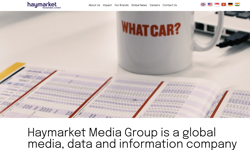Outside of the US, the practice of guaranteeing a circulation rate base to advertisers is basically nonexistent. And some US consumer publishers wish that it didn’t exist here, either — that it would fade into oblivion at this stage of the game.
The basic premise seems simple enough: the advertiser agrees to pay X dollars per thousand circulation, and is guaranteed that the magazine will, at minimum, deliver X total subscriptions / single copies. If audits reveal that the magazine did not deliver on its rate base, the agency will generally demand a rebate or quid pro quo (although magazines that deliver a bonus over rate base don’t get any additional monies…). But the true scenario is complex, and becoming more so.
Even in the US, rate bases are far from universal. According to Capell’s Circulation Report (CCR), as of the end of 2005, 53% of US consumer magazines audited by the ABC that serves North America did not declare a rate base (including more than 40 US titles that have stopped claiming a rate base just within the past five years). Further, by my own count, among US consumer titles audited by BPA Worldwide in the same period, 62% did not declare rate base.
However, a preponderance of those with larger, primarily paid circulations continue to declare rate base. (The average 2005 circ size for ABC titles claiming a rate base was 747,543, versus 176,549 for those not claiming one, according to CCR.) Further, even many US consumer titles that have entirely nonpaid circulation, or significant components of nonpaid, are not only audited, but also declare a rate base.
Why? Powerful media buyers view the rate base, and independent circulation audits, as providing needed accountability for their investments.
Which is all well and good - but two more critical factors must also be thrown into the mix. One is that most audited, primarily paid circulation consumer magazines have traditionally guaranteed a 100%-paid rate base (over 90% of ABC titles that declare rate base do so on a 100%-paid basis). The other is that the biggest sources developed to make up for the huge, sudden losses in paid stampsheet subscriptions back in the mid 90’s have now been declared by the audit bureaux to be invalid as paid. As of the first-half 2006 audit report period, many publishers have had to reclassify significant numbers of third party-sponsored and public place-distributed subscriptions (eg. physician waiting room copies) from paid to nonpaid (or in ABC’s terminology, ‘verified’).
Now, it’s a fact that syndicated audience numbers (readers per copy), and not circulation numbers, are the main metrics used to select magazines for US media plans. It is also a fact that public place copies generate more readers per copy. Further, research shows that the demographics of such readers are desirable. However, media buyers have made an art out of using circulation statements to negotiate the actual terms of a buy, and one popular gambit is to insist that readers who do not personally pay for the magazines they are reading are ipso facto ‘less engaged’, and therefore either to be discounted or outright disqualified as part of the buying terms. Never mind that available evidence does not support this premise, or that under auditing rules, a reader need only pay one cent to be legitimately reported as paid.
What will publishers do?
The options for publishers who are now struggling to make their traditional all-paid rate base guarantees are not very attractive. If they can’t somehow convince media buyers to accept newly nonpaid components as qualifying toward having met their rate bases, they must either invest in different circulation sources that are more costly, or reduce their rate bases and take an ad revenue hit.
It is still unclear how many publishers will have the fortitude to pursue the first option aggressively. "Public place, and other valid nonpaid circulation, should absolutely be included as part of rate base," maintained CCR’s publisher, Dan Capell, during a recent publishing panel. "I just hope that publishers make this case, instead of copping out and including only paid in their rate bases."
Better yet, as Capell and some publishers have suggested, why not ditch the whole rate base concept and allow publishers to improve their circulation economics by managing to realistic, ‘natural’ circulation levels?
Amen to that… but again, not so simple. To wit: what would replace rate bases? Traditional syndicated research takes forever to release, and the data is unstable — making it scary for publishers to rely entirely on such data to support their publications’ value to advertisers. (Rate bases may be costly to maintain, but at least they can be controlled.) New services are promising much faster (by issue) and more accurate readership data, but they will have to prove themselves to publishers and media buyers alike.
And, more to the point, while some publishers would like to see new metrics supersede the existing systems, media buyers may have other ideas. While they’re eager for new metrics, few seem willing to give up rate bases and audits. Rather, they seek additional accountability and reader insights — proof not only that readers are ‘engaged’ by a given magazine, but ultimately, that readers are buying their products as a result of being exposed to the ads.
FEATURE
To Rate Base or Not to Rate Base…
US publishers would dearly love to ditch the rate base system, but media buyers are unwilling to let them. Furthermore, recent developments are, says Karlene Lukovitz, piling further pressure on publishers.










